Yamaha unveiled its all-new 2009 YZF-R1 in Las Vegas on September 8. R1 buyers are starting to request rider-friendly features like more bottom-end torque over top-end power, so the new bike doesn't gain much power or lose weight compared to the 2008 YZF-R1. Instead, it uses technology like a "crossplane" crankshaft (no, it's not a Jimi Hendrix song) and other features to make the bike easier to ride.
To achieve this, Yamaha's engineers borrowed from Rossi's YZR-M1 MotoGP racer. The "crossplane" or 90-degree crankshaft has a staggered firing order—270, 180, 90 and 180 degrees—to smooth out the inertial energy pulses that make a liter-sized sportbike feel bigger and heavier than middleweight machines. Tech Editor Kevin Cameron notes that this crank is significant because it will improve grip accelerating off corners. A standard 180-degree crank stops and then accelerates all four pistons every 180 degrees, but the 90-degree crank will smooth out torque delivery, as the pistons are firing at different times. And although this trick doesn't actually increase torque, the better feel for traction could give this new R1 the edge in the Open-class wars.A counterbalancer smoothes things out even more, and Yamaha is jumping on the tri-mode bandwagon with D-MODE throttle control, which uses the YCC-I variable intake-tract system to offer the rider three different power-delivery characteristics. In addition to the standard mode, an "A" mode emphasizes low and midrange performance, and a "B" mode softens power delivery for more delicate situations, like rain riding.
Although the chassis shares its 55.7-inch wheelbase and steering geometry with the 2008 YZF-R1, the frame, magnesium subframe and swingarm are new items. The footpegs are now two-position adjustable, and new SOQI suspension gets some neat innovations. The right fork leg handles rebound damping and the left deals with compression damping, similar to the M1. Better yet, the rear SOQI shock (adjustable for low- and high-speed damping) has a hydraulic adjuster for easy spring-preload adjustment, much to the chagrin of knuckle skin-graft specialists worldwide. Front brakes are six-piston radial-mount calipers with 310mm discs.
Styling is as distinctive as the bike's engineering. Yamaha has decided to stick with the twin undertail exhausts, but is now using bug-eyed projector-beam headlamps and "layered" body panels for a futuristic look. An additional treat is a gear-position indicator, and R1 purists will celebrate the Pearl White/Rapid Red paint option reminiscent of the first-generation 1998 YZF-R1. The bike will be in dealers in January; prices start at $12,390, or $691 more than the 2008 model.
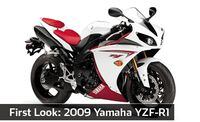
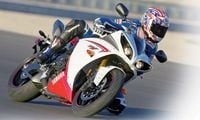
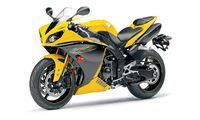
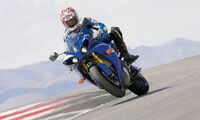
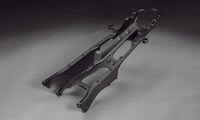
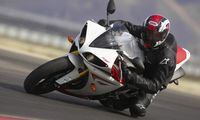
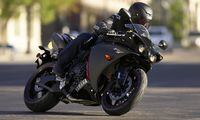
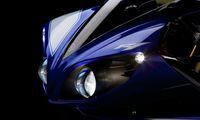
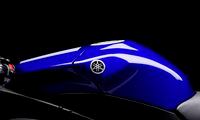
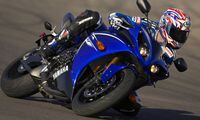
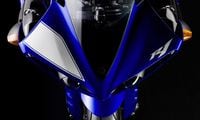
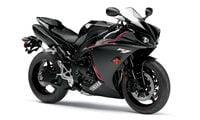
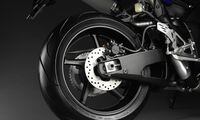
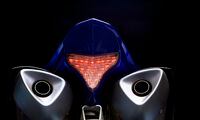
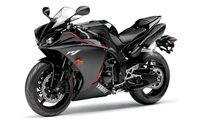
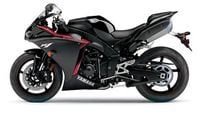
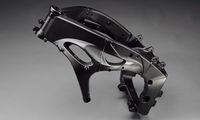
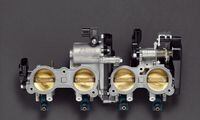
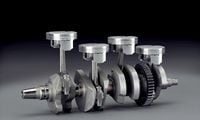
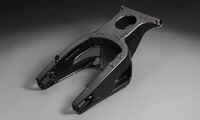
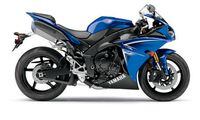
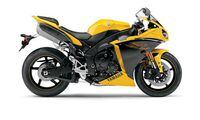
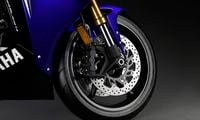
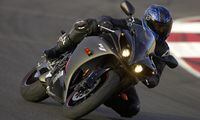

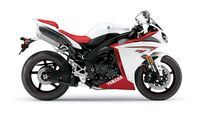
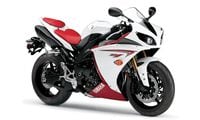
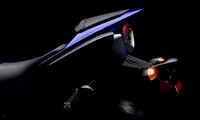
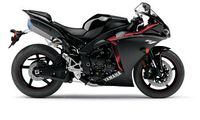
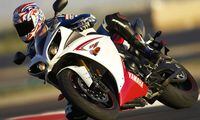
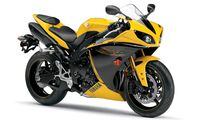
/cloudfront-us-east-1.images.arcpublishing.com/octane/ITVHWHVQ75BQBHACERYDJLPLHE.jpg)
/cloudfront-us-east-1.images.arcpublishing.com/octane/M3QRBSQ4VFEVPKYTTM3OETVFBU.jpg)
/cloudfront-us-east-1.images.arcpublishing.com/octane/H3EMT5NJ5BDZPBBH27SW3ADQH4.jpg)
/cloudfront-us-east-1.images.arcpublishing.com/octane/XTROSHDZFJB5DIJYU2VF2REFIU.jpg)
/cloudfront-us-east-1.images.arcpublishing.com/octane/7EUSM4GQEBEFTPAYZ6MOMKMMUQ.jpg)
/cloudfront-us-east-1.images.arcpublishing.com/octane/ZN44KZLHD5CHVIY3WZYAGTPGSI.jpg)
/cloudfront-us-east-1.images.arcpublishing.com/octane/5A776WXBY5GAPDYFTTUEUZNIJA.jpg)
/cloudfront-us-east-1.images.arcpublishing.com/octane/NCYHFQ2S3BAT7EC7VDN2ONGRTU.jpg)
/cloudfront-us-east-1.images.arcpublishing.com/octane/XQORS527YFFT3MVI326EOEYJUI.jpg)
/cloudfront-us-east-1.images.arcpublishing.com/octane/TVDPP3TGMZHODFXASIFUM2KD34.jpg)
/cloudfront-us-east-1.images.arcpublishing.com/octane/EWDMR3DDTBBQPI7DQVZCLMRFAE.jpg)
/cloudfront-us-east-1.images.arcpublishing.com/octane/4XHHLVOUKFE3PDSWNSV4JJMGOE.jpg)
/cloudfront-us-east-1.images.arcpublishing.com/octane/5RLI3NQKQJA3LKKCQHRXQFTL6Q.jpg)
/cloudfront-us-east-1.images.arcpublishing.com/octane/3QCYJCI2RNBENIRWAKEOEKHFUM.jpg)
/cloudfront-us-east-1.images.arcpublishing.com/octane/XJFFFMRN6VEZ7CDNAGKWVPC3H4.jpg)
/cloudfront-us-east-1.images.arcpublishing.com/octane/RMC3CHWSHFAUJA2WJ2FVG4NBOA.jpg)
/cloudfront-us-east-1.images.arcpublishing.com/octane/WXEZV4WAYBERFKSRE5M7GQBW7A.jpg)
/cloudfront-us-east-1.images.arcpublishing.com/octane/LO3PZVGICFGJZBNUA2ORUSAUSE.jpg)
/cloudfront-us-east-1.images.arcpublishing.com/octane/UFHLTNOXLVARVLZV32M6ZJZV4Y.jpg)
/cloudfront-us-east-1.images.arcpublishing.com/octane/CTSWNU7SNNCC3LWB2KATYZ5AXY.jpg)
/cloudfront-us-east-1.images.arcpublishing.com/octane/72EPJVNA2VGVXJ2BVDFFLN67KQ.jpg)
/cloudfront-us-east-1.images.arcpublishing.com/octane/A7C4GNXEHNHC3LL6RETG6MIPPY.jpg)
/cloudfront-us-east-1.images.arcpublishing.com/octane/Q4KZ7ACKF5BVTE56LMG7RPJCEM.jpg)
/cloudfront-us-east-1.images.arcpublishing.com/octane/RQ2CXG6ATJBUZGUR7NP35C3VBE.jpg)